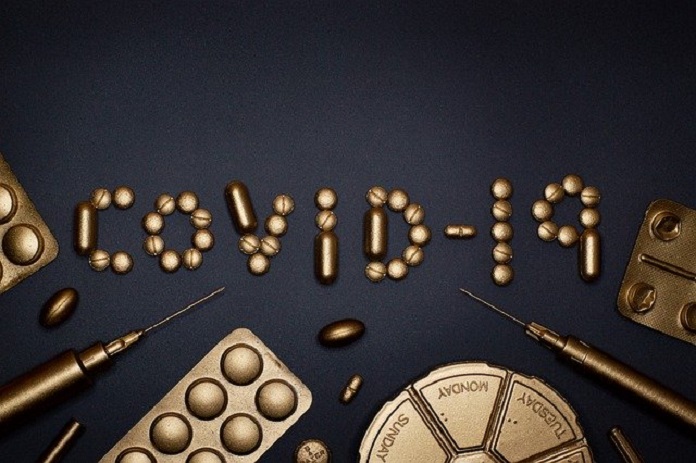Cancer drug acalabrutinib may be an effective treatment for COVID-19 cytokine storm.
The SARS-CoV-2 pandemic has introduced a number of new phrases into the global lexicon. Among them is the term “cytokine storm”. This refers to the exaggerated immune response seen in some patients that can lead to acute respiratory distress syndrome and ultimately death. Given the devastating consequences of this cytokine storm reaction, finding an effective therapy to treat it is of great significance.
A new study published in the journal Science Immunology puts forward a hypothesis for how COVID-19 causes a cytokine storm and explores a potential therapeutic option (1). The authors suggest bruton tyrosine kinase (BTK) as a key signalling particle in the initiation of a cytokine storm. They hypothesise that when a certain type of immune cell known as a macrophage ingests viral RNA, this BTK signal is activated. This in turn leads to a domino effect with the production of inflammatory cytokines and the recruitment of further macrophages to the infection site.
If this hypothesis is accurate, then a drug that switches off or turns down this BTK signalling could be useful in treating COVID-19 patients who are suffering from a hyperinflammatory response. Acalabrutinib is a biological agent designed specifically to inhibit BTK signalling. It has previously been used to treat certain types of leukaemia and lymphoma. However, in this case, it is being tested on COVID-19 patients with evidence of a severe immune response.
In total, 19 patients were treated with acalabrutinib. All patients had a confirmed diagnosis of COVID-19. Eight were receiving mechanical ventilation whilst the other 11 were receiving supplemental oxygen. The majority of these patients were obese and suffering from hypertension.
The patients were followed for an average of 12 days following treatment initiation. In terms of the clinical outcomes, patients in the supplemental oxygen cohort fared well. Eight of the 11 had been discharged from hospital at follow up and did not require further supplemental oxygen. Of the three who remained, their respiratory performance was significantly improved.
Unfortunately, the patients in the mechanical ventilation subgroup did not fare as well. Four of the eight patients were removed from mechanical ventilation at some point during the study. However, one of these patients subsequently died of a pulmonary embolism. Two of them were discharged home, whilst the final patient remained on supplemental oxygen at the time of follow-up. Of the four patients who had not come off mechanical ventilation at the time of follow-up, one had died whilst the other two had oxygen requirements that varied.
As the initial follow-up time was so short, the study authors conducted a less detailed follow up approximately one month later to assess a slightly longer term prognosis. During this follow up, of the 11 patients in the supplemental oxygen group, one patient had died and an additional patient had been discharged on room air. This means that from the original 11 in this subgroup, one had died, one remained in hospital whilst the other 9 had been discharged. In the mechanical ventilation subgroup, at the secondary follow up point, from the initial eight patients, four had died, three had been discharged and remained well while the final patient remained in respite care.
There are a number of limitations to this study. The absence of any control group is the primary limitation. However, given the number of COVID-19 cases in hospitals worldwide, it may be possible in the future to retrospectively create a control cohort matching the study population. Additionally, there is a lack of standardisation within the study group in terms of the treatments they received. The treatment duration varied between individuals as did other treatments patients were receiving at the same time. For example, five patients were also receiving hydroxychloroquine, which is itself an experimental treatment for COVID-19.
The study also includes a relatively small sample size, which does not allow any definitive conclusions to be drawn. However, it does provide some important information. Firstly, it puts forward a plausible mechanism by which COVID-19 can cause a cytokine storm. It also highlights a key step in this pathway and demonstrates that an existing drug, acalabrutinib, may be effective at intercepting this step. The results suggest that acalabrutinib warrants further investigation.
Written by Michael McCarthy
1. Roschewski M, Lionakis MS, Sharman JP, Roswarski J, Goy A, Monticelli MA, et al. Inhibition of Bruton tyrosine kinase in patients with severe COVID-19. Science Immunology. 2020;5(48):eabd0110.
Image by Miguel Á. Padriñán from Pixabay



